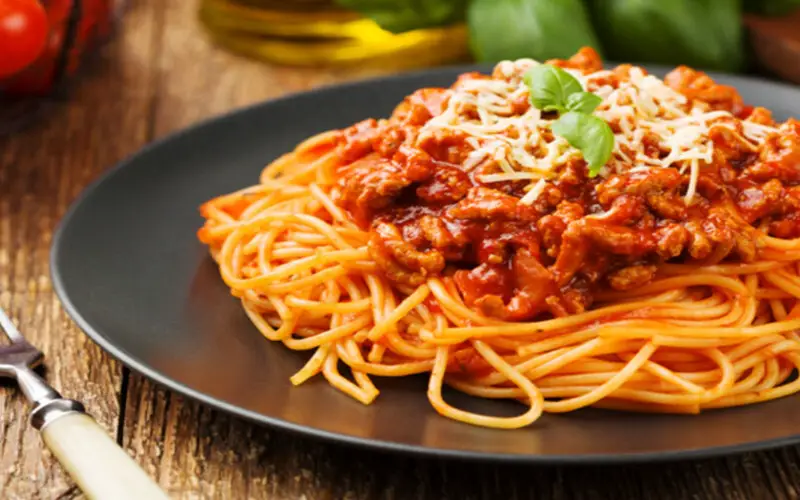Chicken Alfredo: A Transatlantic Twist

One of the most famous “Italian” dishes outside of Italy is Chicken Alfredo. However, you might be surprised to learn that this creamy pasta dish is not an authentic Italian creation. Its origins can be traced back to early 20th-century America, where Italian immigrants adapted fettuccine al burro (fettuccine with butter) into the beloved Chicken Alfredo we know today. In Italy, you won’t find this rich pasta dish on traditional menus.
Garlic Bread: The Americanization of Bruschetta

Garlic bread, often associated with Italian-American cuisine, is a prime example of a dish that deviates from its Italian roots. While bruschetta, featuring toasted bread rubbed with garlic and topped with tomatoes and basil, is a classic Italian antipasto, the garlic bread we commonly find in the United States is a more buttery, garlicky interpretation. This Americanized version reflects the fusion of flavors that occurs when culinary traditions cross borders.
Spaghetti Bolognese: An Italian Culinary Misfit

Spaghetti Bolognese, a staple in many non-Italian households, is a culinary misfit when it comes to authentic Italian cuisine. In Italy, Bolognese sauce, known as ragù alla bolognese, is traditionally paired with tagliatelle, not spaghetti. The rich, slow-cooked meat sauce hails from the Emilia-Romagna region, and its mismatch with spaghetti is a product of international adaptation.
Hawaiian Pizza: An Unlikely Marriage

Hawaiian pizza, topped with ham and pineapple, is a controversial creation that has sparked debates among pizza purists. Despite its name, this sweet and savory pizza combination has no roots in Italian culinary traditions. It originated in Canada in the 1960s, and its “Hawaiian” designation is more about marketing flair than any connection to Hawaiian or Italian cuisine.
Caesar Salad: A Mexican-American Fusion

The Caesar salad, often thought to be of Italian origin, is, in fact, a Mexican-American creation. Legend has it that Caesar Cardini, an Italian-American restaurateur, invented the salad in Tijuana, Mexico, during a Fourth of July rush in 1924. The classic combination of romaine lettuce, croutons, Parmesan cheese, and Caesar dressing has become a global sensation, albeit with a misleading Italian association.
Italian Wedding Soup: A Mistranslation

Despite its name, Italian Wedding Soup is not a dish typically served at Italian weddings. The term “wedding soup” is believed to be a mistranslation of the Italian minestra maritata, which refers to the harmonious marriage of flavors in the soup rather than a matrimonial celebration. This comforting soup, featuring meatballs, greens, and pasta, has Italian roots but is not a staple in Italian wedding feasts.





















